Or the gunsmith. Which may be at the same place. The point is that you’re going somewhere you intend to take your gun out and show it to someone. Doing that wrong can lead to misunderstandings. You don’t want that. The best case scenario is that there will be a place you’re no longer welcome. You can figure out the worst case.
Table of Contents
Safety first.
Job one is to make sure that the gun is safe. Do that before you leave the house. Playing around with your gun in their parking lot is contraindicated and can also lead to misunderstandings.
Job two is to make sure that others can tell the gun is safe. They’re not going to take your word for it. Show them; don’t tell them. In other words, there should be clear visual clues that the gun is safe.
In other words, you have two goals: make sure the gun is safe and then make sure it’s obvious at a glance that the gun is safe.
There are several simple ways to do this.
Have a case.

In the picture I’m using the one my Sig P365 came in (review here). I’m something of a pack rat and keep those. Yes, I have a collection now.
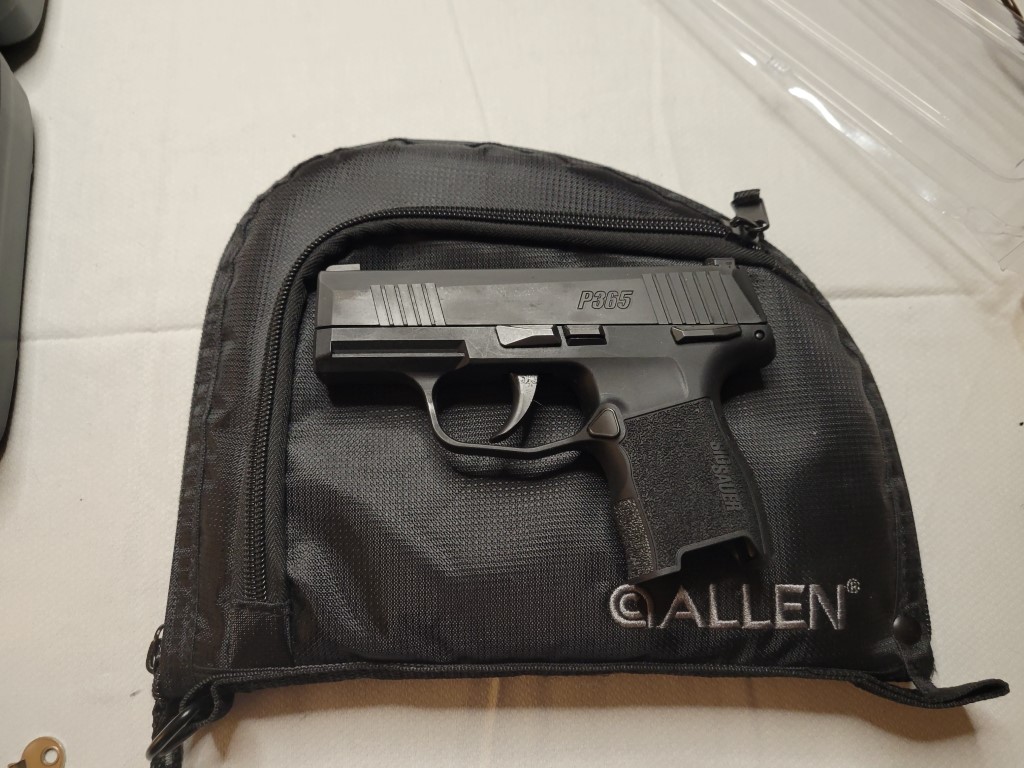
I also have an inexpensive soft-side case; I don’t ever know where it came from. I’ve seen those from $10 and up and it’s a good idea to have one lying around.
What you don’t want to do is walk in to the business with a gun in your hand. Or stuck in your belt or pocket. Or even in a holster. I have a gun in a holster all the time in a gun store but I don’t touch it. It’s not the one I’m there to talk about.
Seriously, have a case.
Take it apart.
Obviously, it should not have a magazine in it. You can have one or more empty magazines with you but they should not be in the mag well.

If you remove the slide from the gun it’s not going to fire. So that’s one option. Personally, I’d go ahead and take the barrel out since there could be live round in the chamber even if the gun’s in two pieces. If it’s in four pieces we’re pretty sure there’s no round there.
You could, technically, just lock the slide back. I’m not excited about that option. There are better ways that take a very, very small amount of money and/or effort.
I wrote this article over several days’ time. During that time I had to go to a gun store to check something on a gun’s sights. I just took the slide. Put it in a case without the barrel in it. Just one example.
Chamber flags.
I’ve bought a gun or two that came with a basic chamber flag but I’m not sure what happened to them. So I picked this box of eight up on Amazon for less than $10. Do I need eight? No, but I’m confident I’ll lose at least a couple.

There are four pistol flags and four rifle flags. You can figure out which are which.
Simple operation here: lock the slide back, insert the flag, then let the slide move forward. The pressure from the recoil spring keeps tension on the flag so it doesn’t fall out. Depending on barrel length the front of the flag may stick out a bit. These flags are a clear indicator there’s not a round in the chamber.
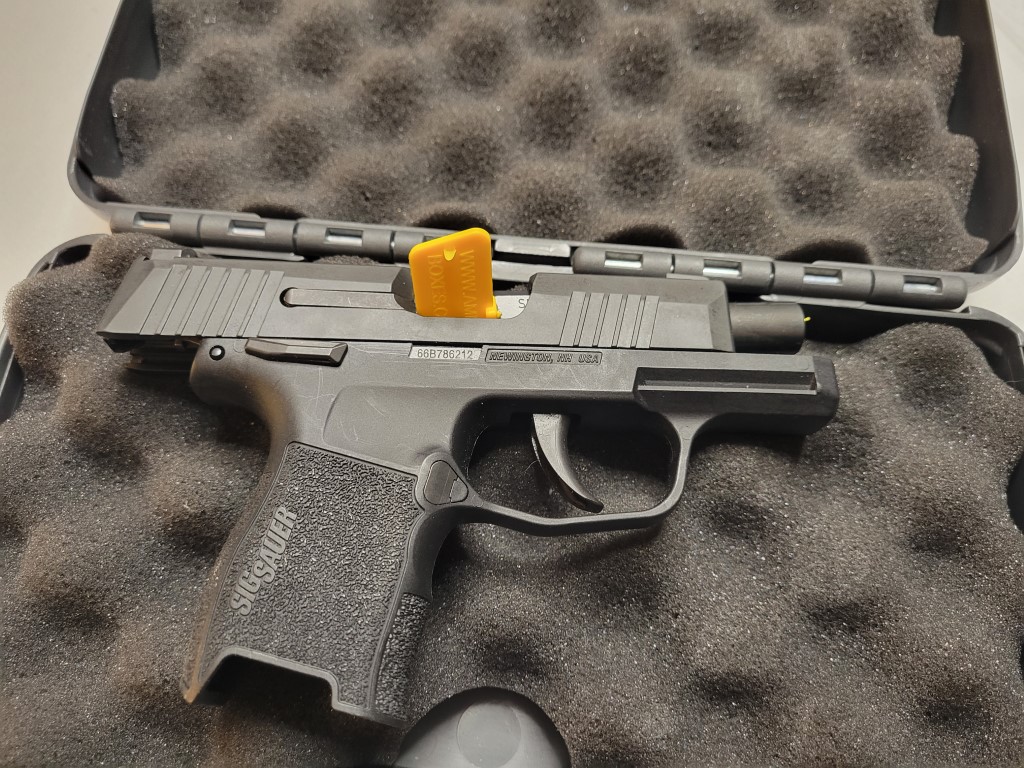
Barrel/Action lock.
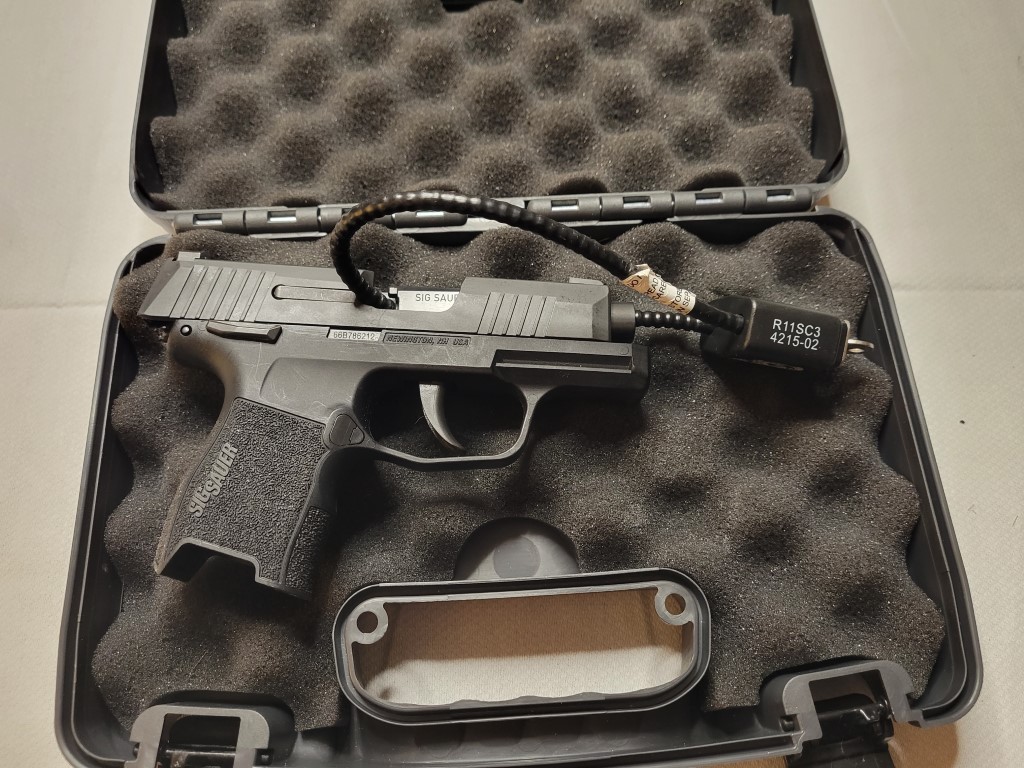
This is something else that often (always?) comes with a new gun. The one in the pictures was the first one I found this morning; it came from a Springfield. They’re all pretty much the same and I wouldn’t be surprised if they are literally the same, as in one manufacturer who sells them to everyone.
As you can see, you just unlock it, run the corded part through the barrel, and relock it. Then drop the slide down onto the cord. Again, a clear indication that the chamber has no round in it.
One caveat; these are not serious locks. They’re great for this purpose but don’t count on one to actually secure the weapon from someone who shouldn’t have it.
Revolvers.
The above ideas are for autoloaders. Revolvers are somewhat different. I have an NAA mini-revolver (review here) that I can simply remove the cylinder. That’s a pretty clear indication that it’s empty. I’ve seen some other SA cowboy type guns where that’s an option.
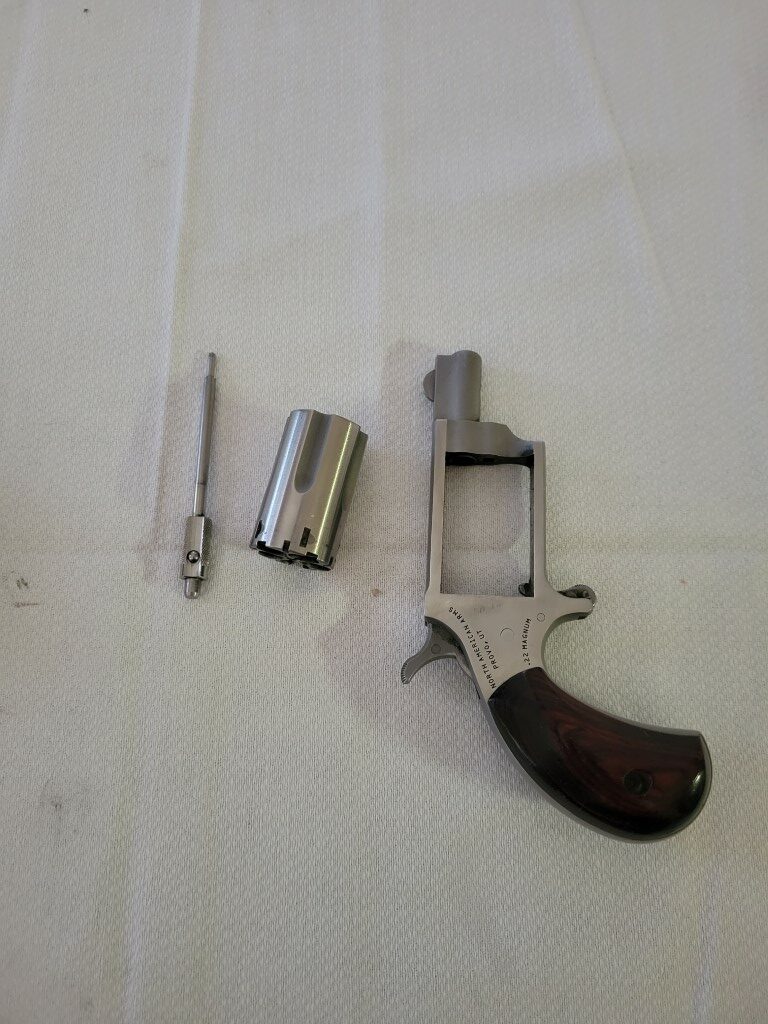
For most defensive revolvers it isn’t. At least not easily. The pictures below use my Smith & Wesson 360PD for an example (review here.)
The flags don’t work well. They fall out easily; there’s no pressure holding them in place. Don’t use that method.
The corded lock through the barrel still works pretty well. There’s no way the chamber can close with that cord through the barrel; again, it’s pretty obvious that it’s safe.
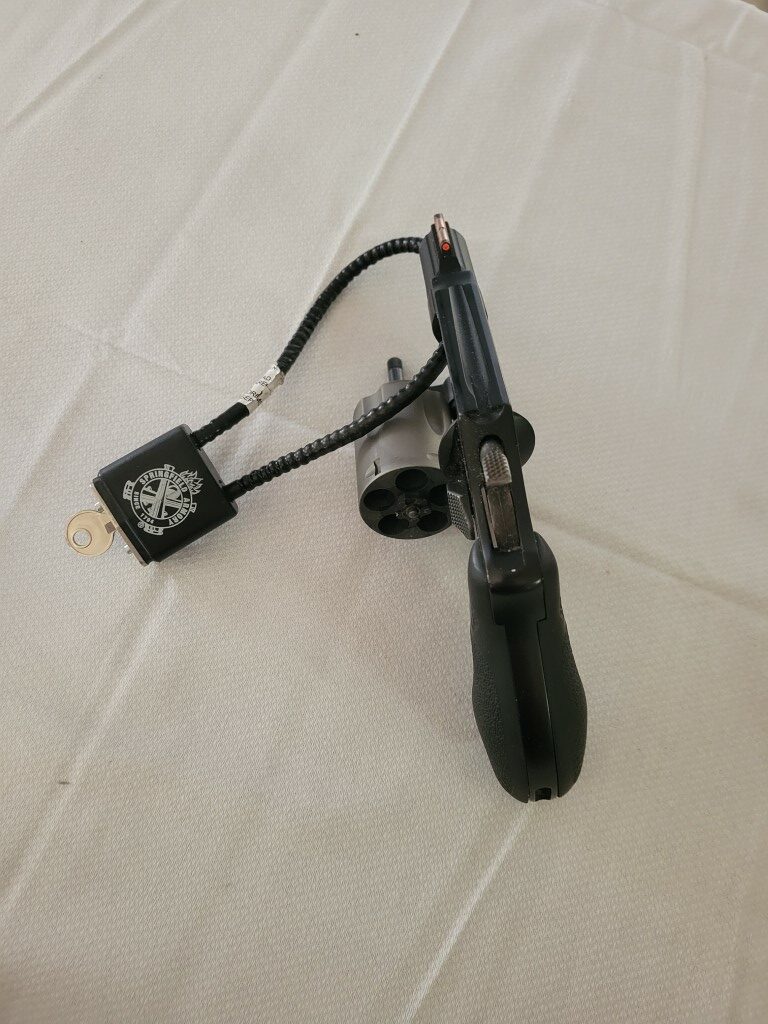
The corded lock through one of the cylinder chambers will, technically, prevent the cylinder from closing and the gun won’t fire. Personally, I find that less visually obvious so I prefer the barrel approach.
You can also run it around the top strap. It keeps the cylinder obviously open.

A normal padlock locked around the top strap also works; Wal-Mart sells several locks for under $5. Same caveat as with the corded lock: those are not serious locks. There’s also a chance of scratching the finish on the gun, if that matters to you.
What not to use.
Trigger locks. They’re useful for keeping the trigger from being pulled but they are completely useless for indicating the loaded status of the gun. They’re also not serious locks.
Snap caps. While those are inert and make the gun safe, they don’t pass the “obviously” safe test. While most are clearly not live it’s just not as visually obvious as we want.
Conclusion
It takes minimal effort to ensure a safe, comfortable trip to the gun store. Make the effort. If you need to buy some of the things I mentioned in this article, then do so. They’re cheap and well worth the money.